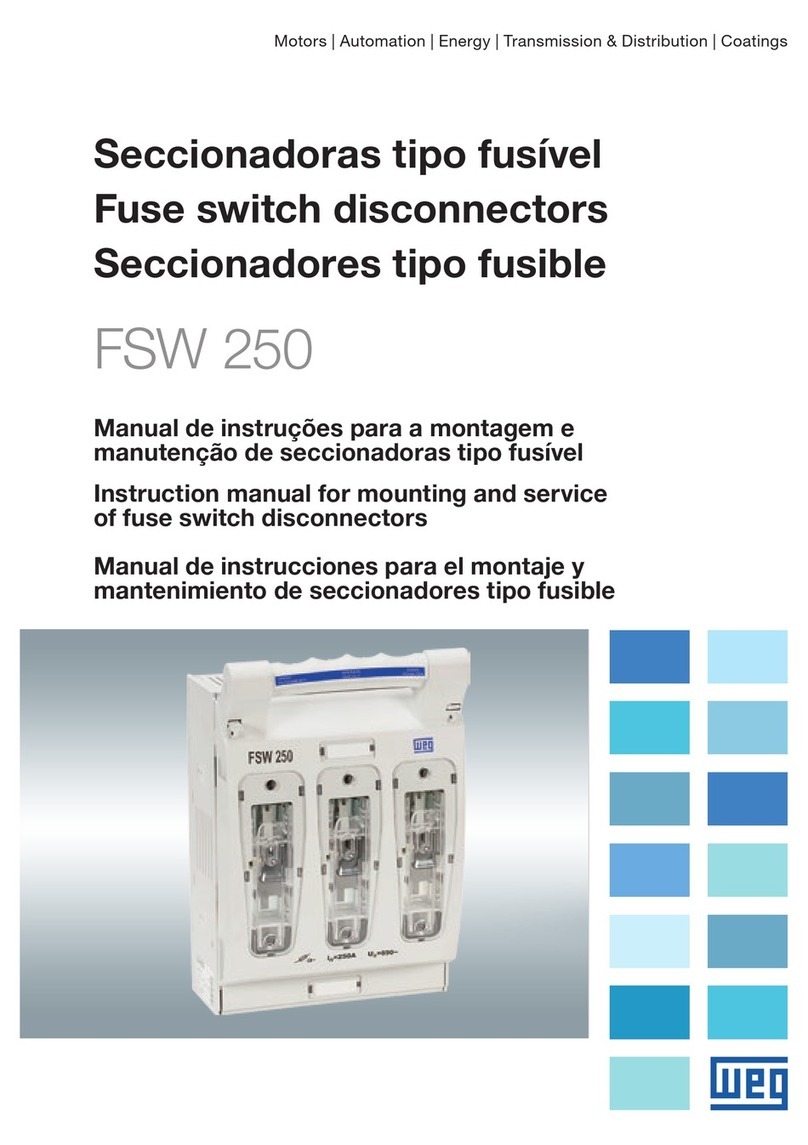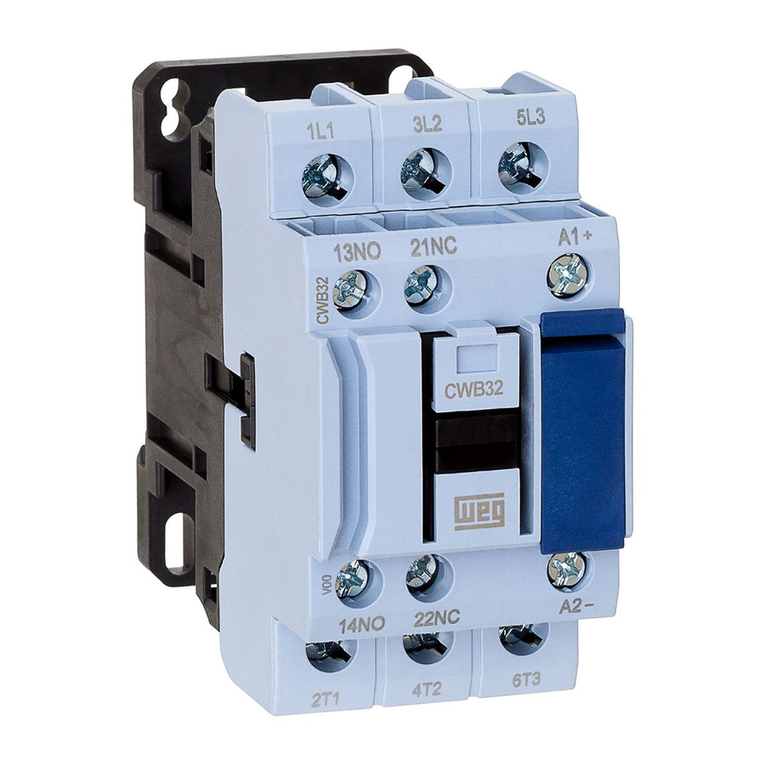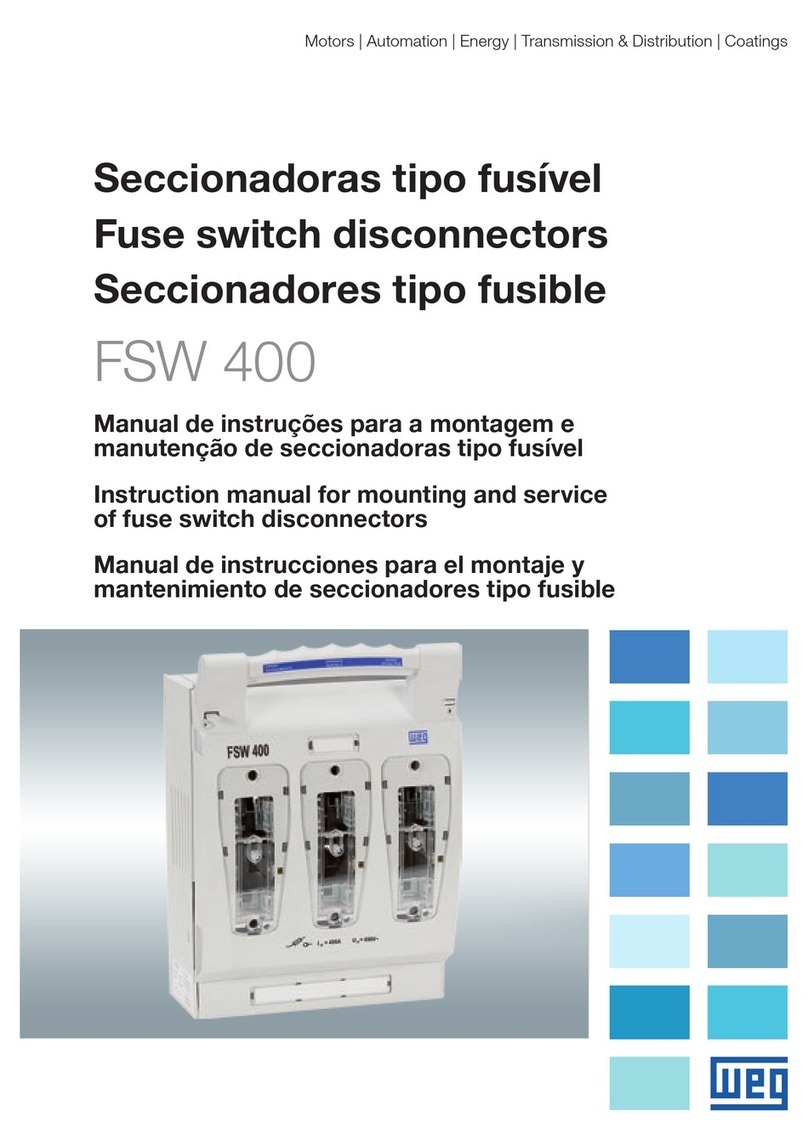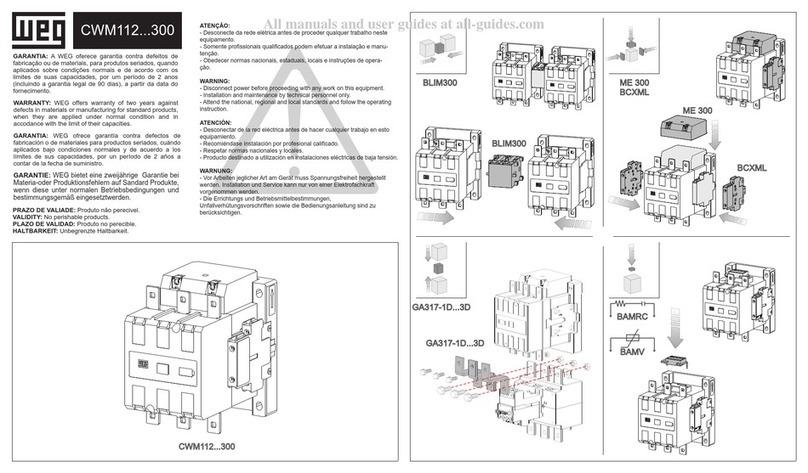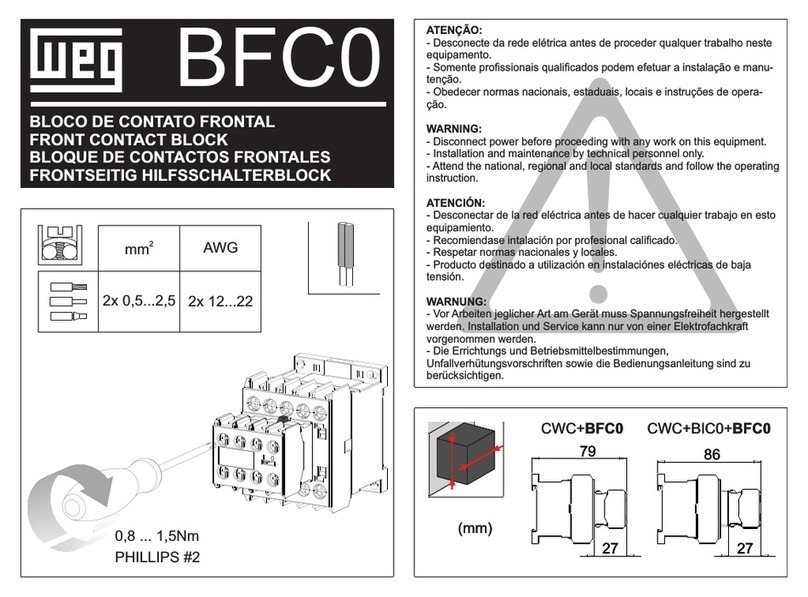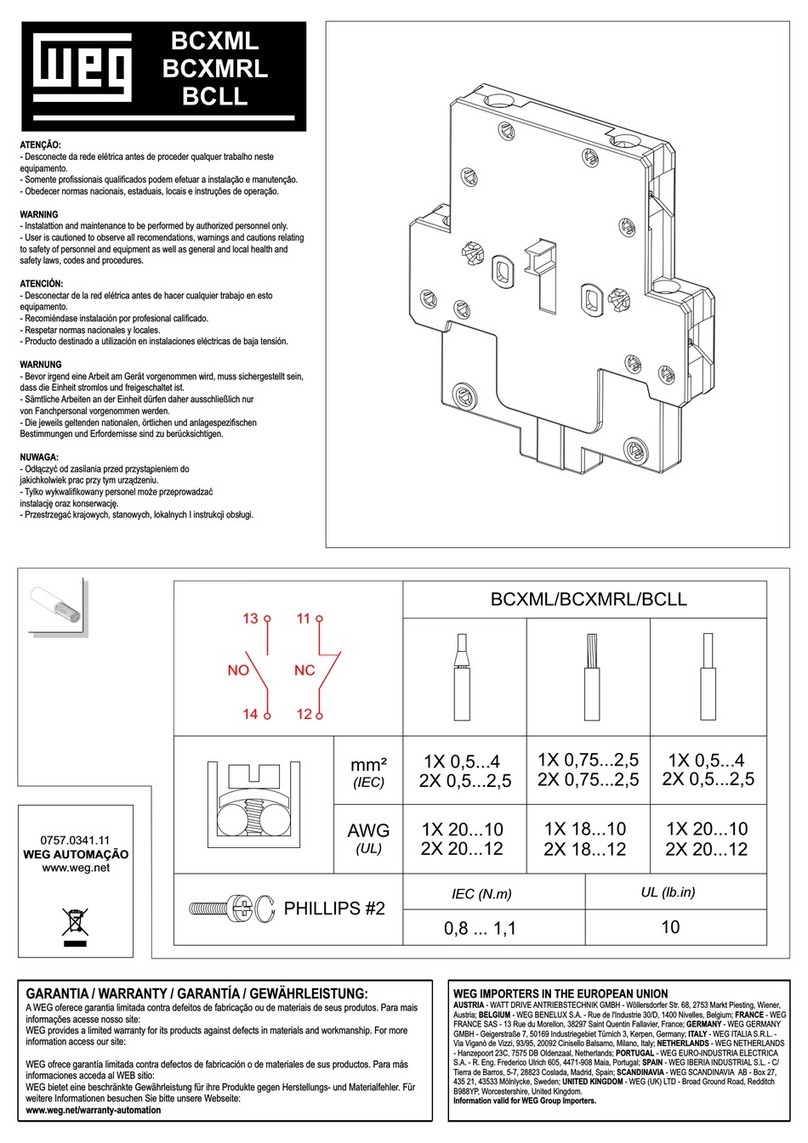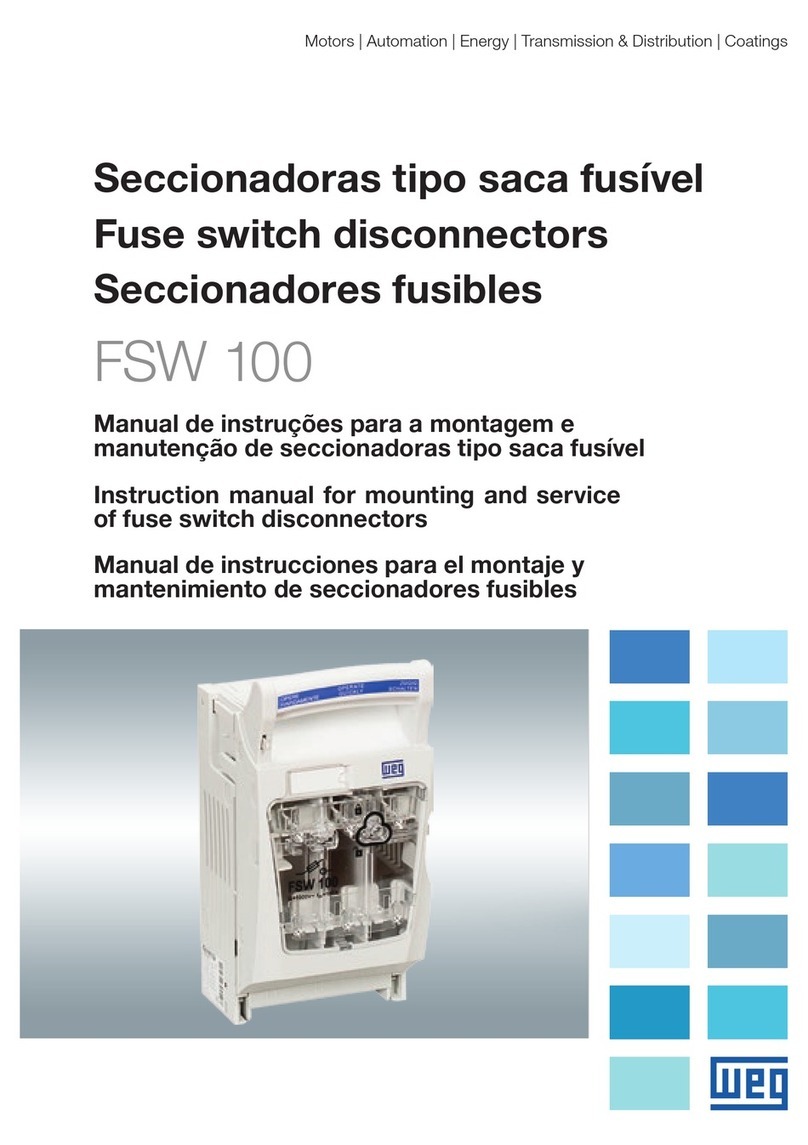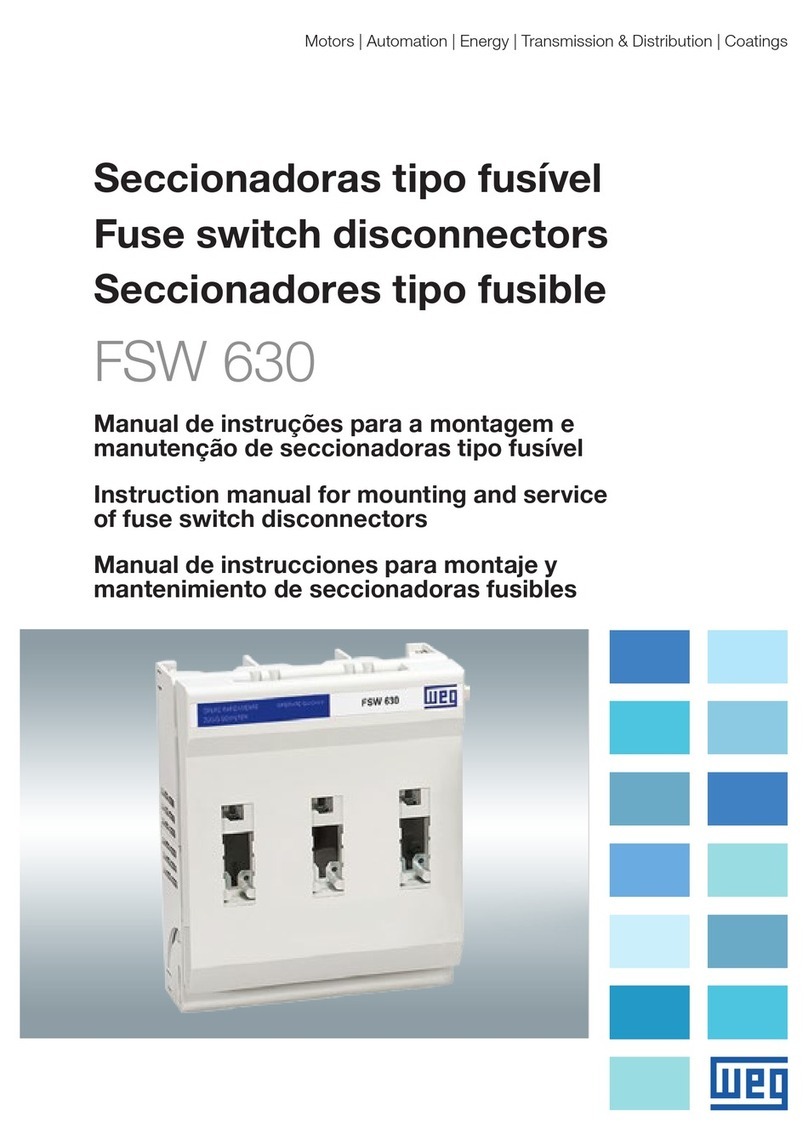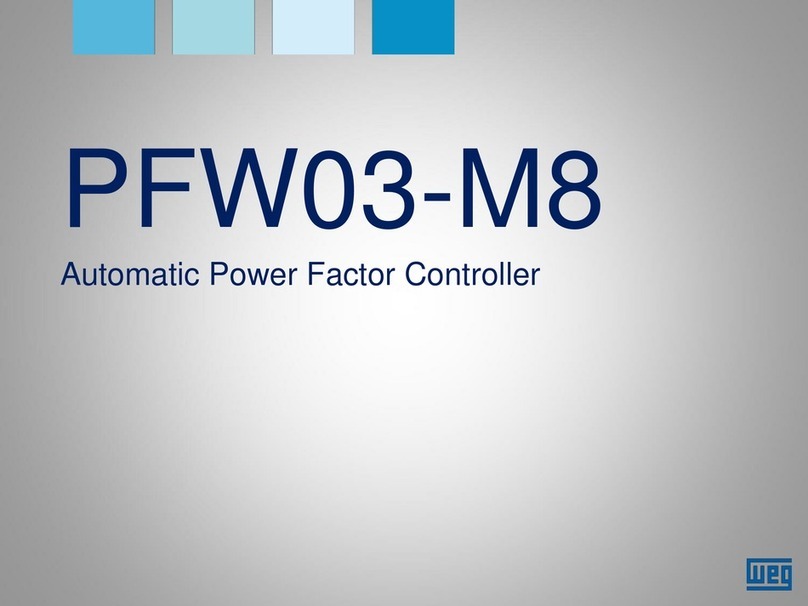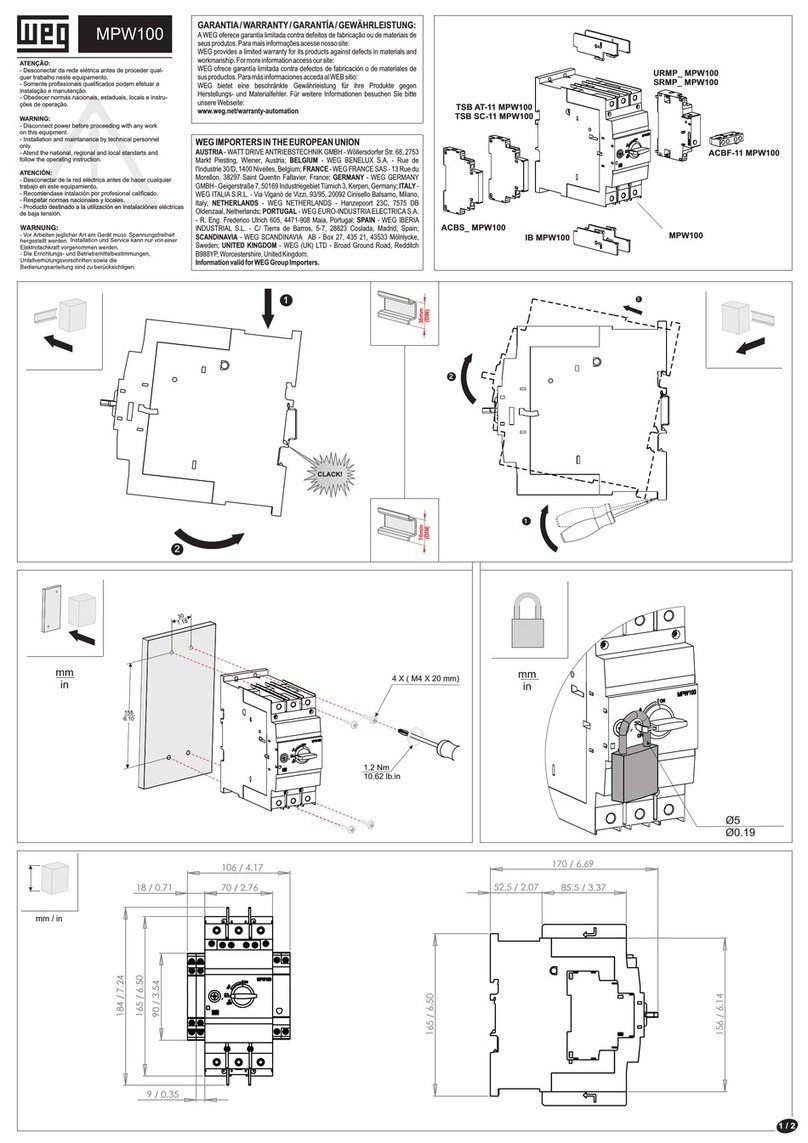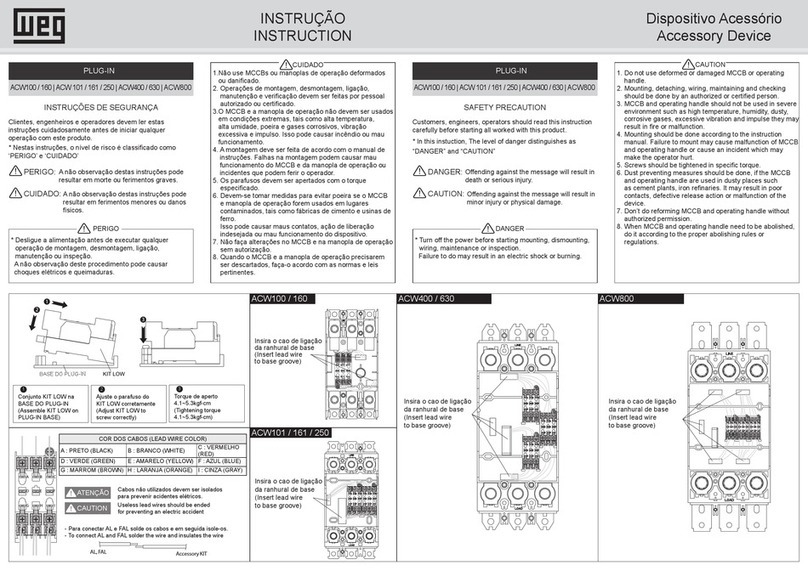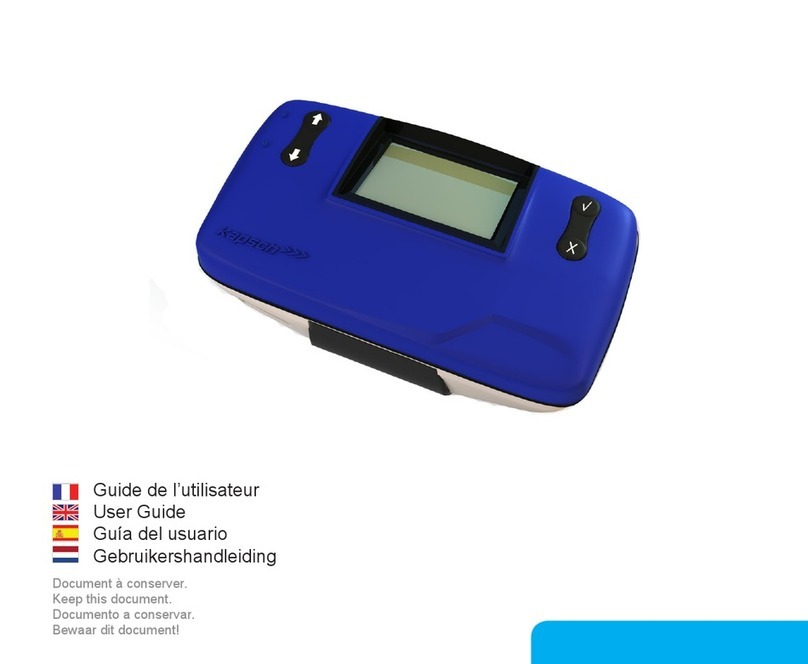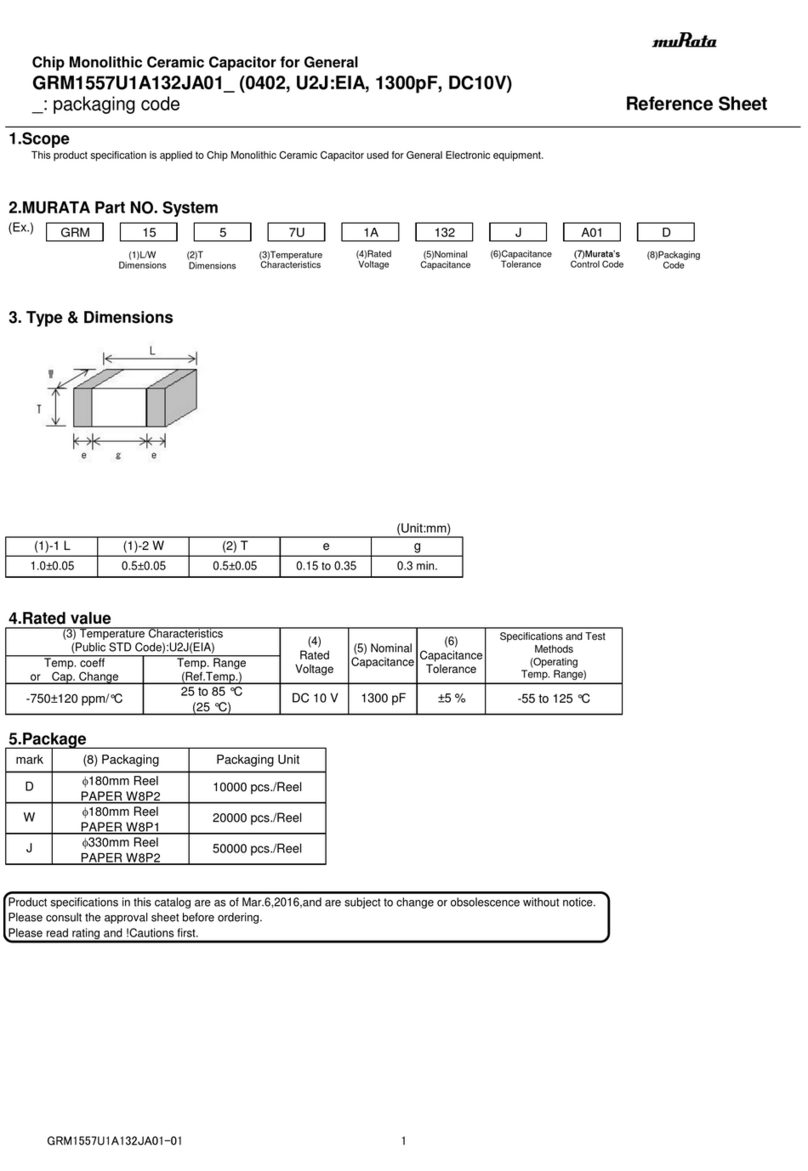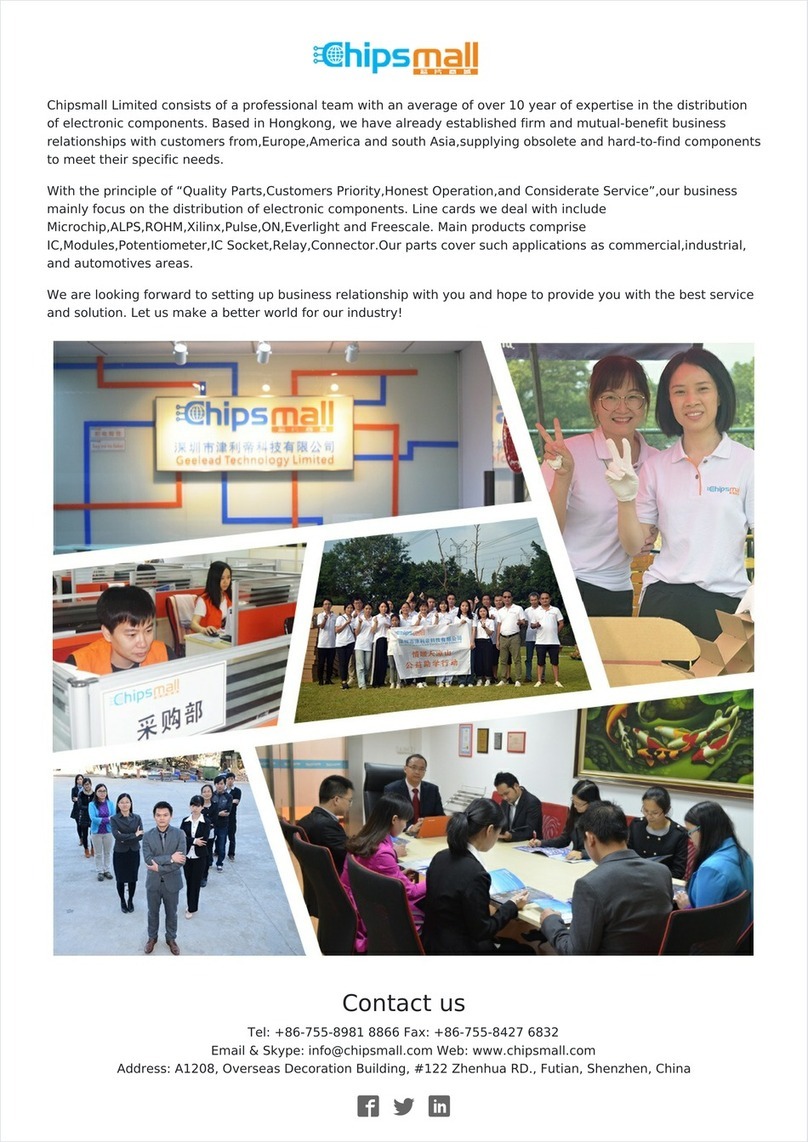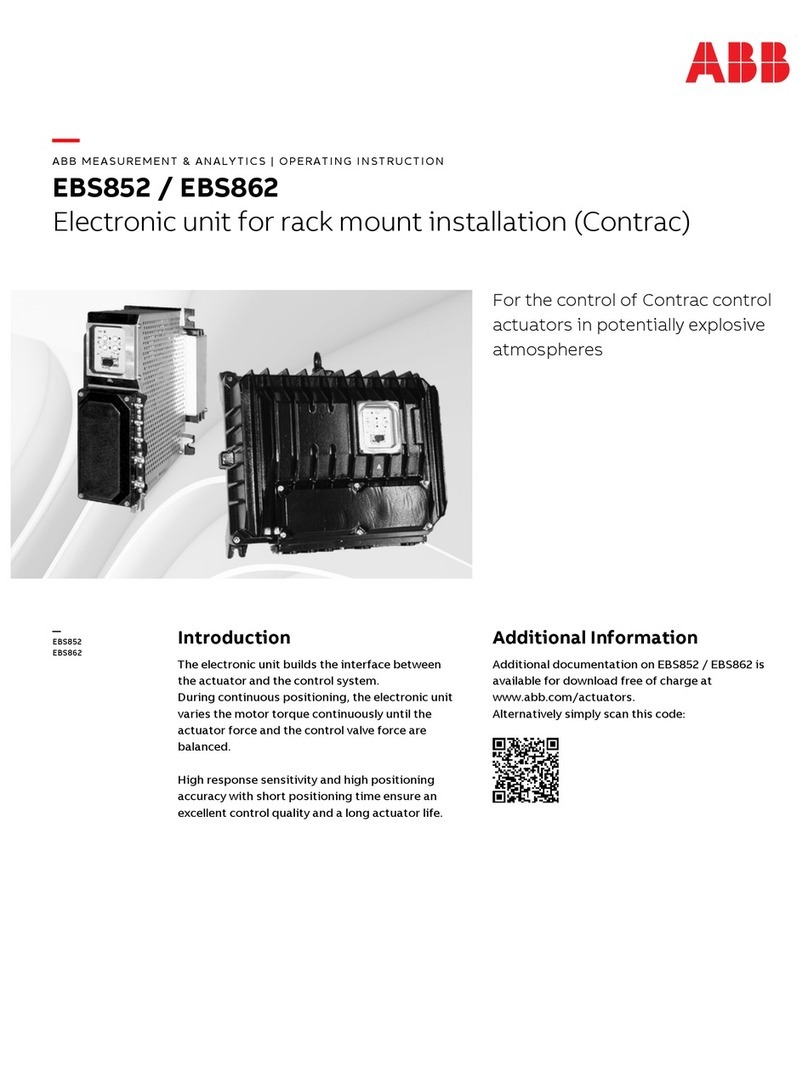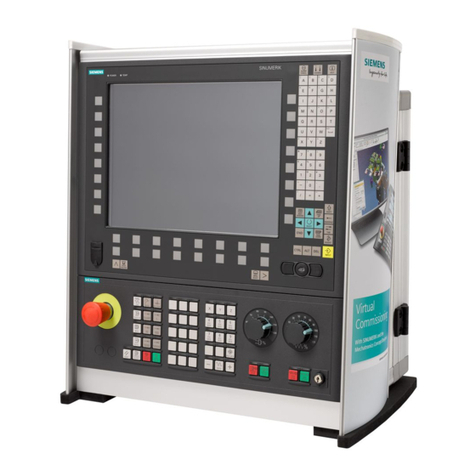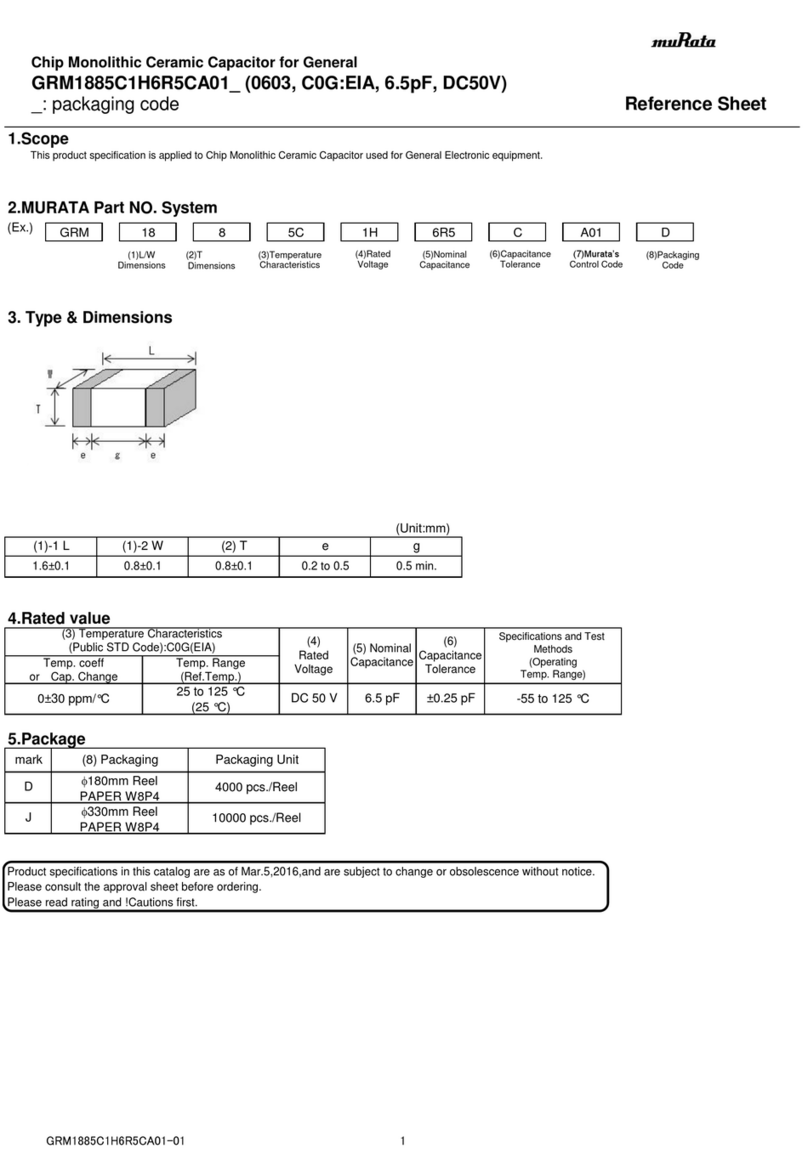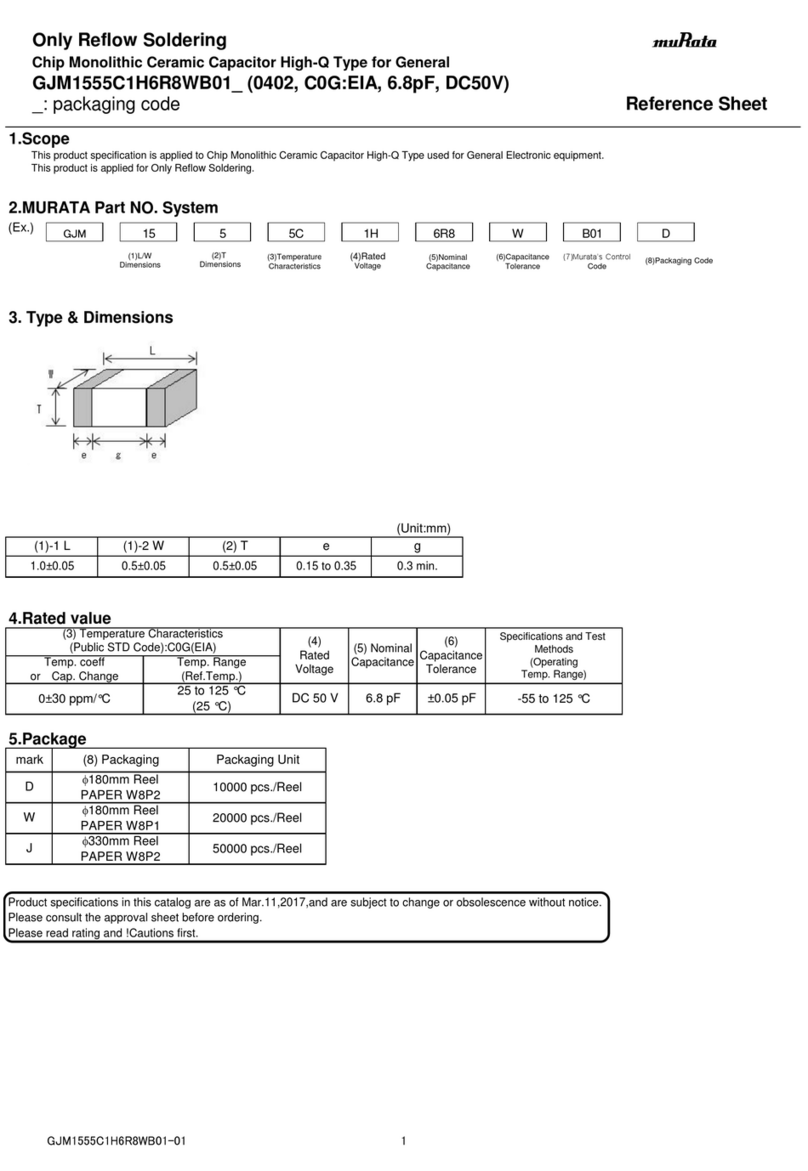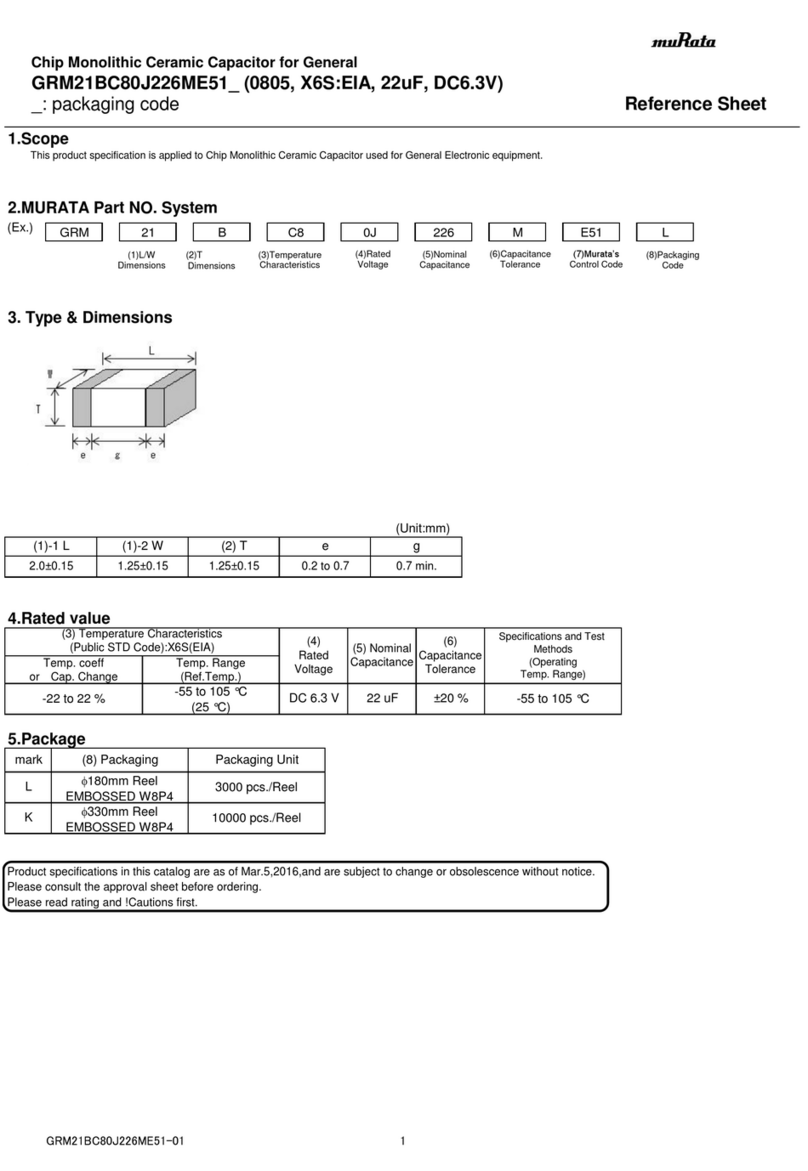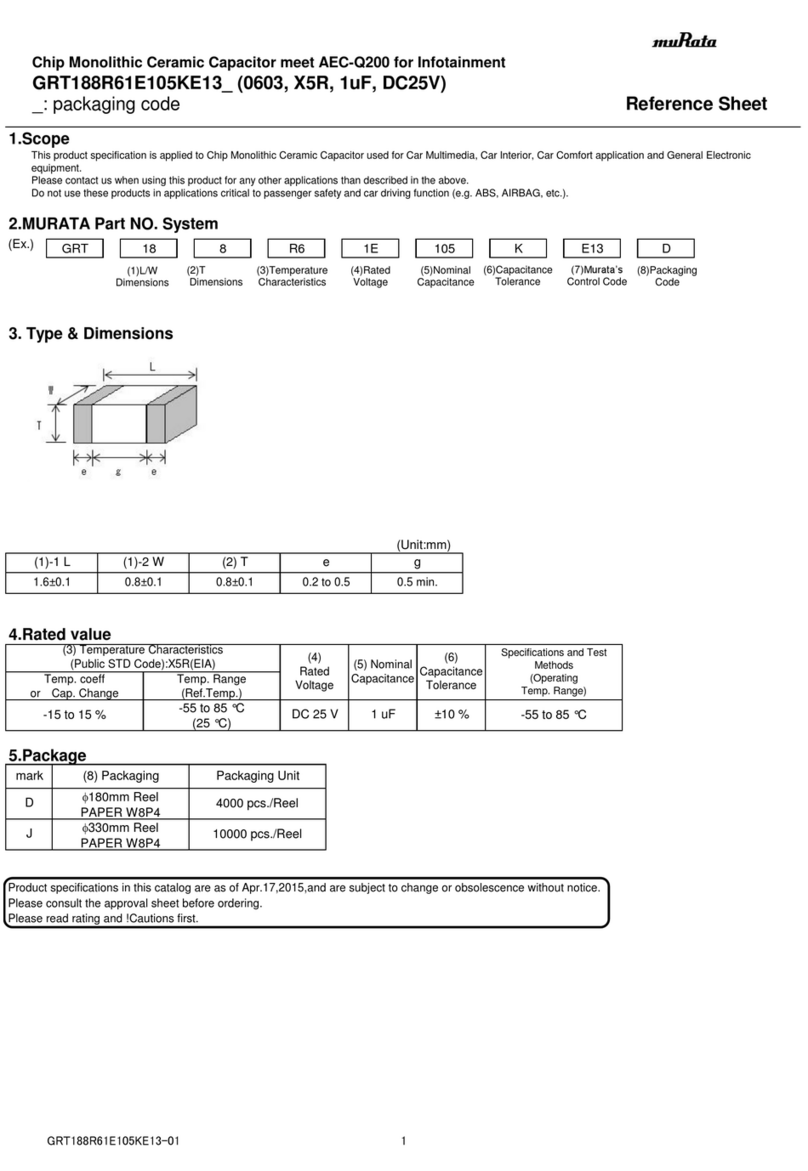WEG SCW100 Series User manual

Motors | Automation | Energy | Transmission & Distribution | Coatings
CANopen
SCW100
User’s Guide

CANopen User’s Guide
Series: SCW100
Language: English
Document: 10008601670 / 01
Build 221
Publication Date: 04/2022

Summary of Revisions
The information below describes the reviews made in this manual.
Version Revision Description
- R00 Cancelled
- R01 First edition

Contents
CONTENTS
ABOUT THE MANUAL ..................................................................................... 6
ABBREVIATIONS AND DEFINITIONS .......................................................................... 6
NUMERICAL REPRESENTATION ............................................................................... 6
DOCUMENTS ...................................................................................................... 6
1 MAIN CHARACTERISTICS.......................................................................... 7
2 INTERFACE DESCRIPTION......................................................................... 8
2.1 CHARACTERISTICS OF THE CAN INTERFACE......................................................... 8
2.2 CONNECTOR ................................................................................................ 8
2.3 ADDRESS .................................................................................................... 8
2.4 BAUD RATE .................................................................................................. 9
2.5 TERMINATING RESISTOR ................................................................................. 10
2.6 INDICATION LED ............................................................................................ 10
3 CANOPEN NETWORK INSTALLATION ...................................................... 11
3.1 BAUD RATE .................................................................................................. 11
3.2 ADDRESS IN THE CANOPEN NETWORK ............................................................... 11
3.3 TERMINATION RESISTOR ................................................................................. 11
3.4 CABLE ........................................................................................................ 11
3.5 CONNECTION TO THE NETWORK ....................................................................... 12
4 S STATUS...................................................................................................... 13
S4 COMMUNICATION ............................................................................................ 13
5 C CONFIGURATION................... .................................................................. 15
C2 COMMUNICATION ............................................................................................ 15
6 OPERATION IN THE CANOPEN NETWORK .............................................. 16
6.1 ACCESS TO THE DATA ..................................................................................... 16
6.2 CYCLIC DATA ................................................................................................ 16
6.3 ACYCLIC DATA .................................................................................. ............ 16
6.4 COMMUNICATION OBJECTS - COB ..................................................................... 16
6.5 COB-ID ....................................................................................................... 17
6.6 EDS FILE ..................................................................................................... 17
7 OBJECT DICTIONARY................................................................................. 18
7.1 DICTIONARY STRUCTRE .................................................................................. 18
7.2 DATA TYPE ........................................................................................... ........ 18
7.3 COMMUNICATION PROFILE - COMMUNICATION OBJECTS ........................................ 18
7.4 MANUFACTURER SPECIFIC OBJECTS.................................................................. 19
8 COMMUNICATION OBJECTS DESCRIPTION ........................................... 20
8.1 IDENTIFICATION OBJECT ................................................................................. 20
8.1.1 Object 1000h - Device Type ................... .................................................... 20
8.1.2 Object 1001h - Error Register..................................................................... 20
8.1.3 Object 1018h - Identity Object .................................................................... 21
8.2 SERVICE DATA OBJECTS - SDOS ........................................................................ 21
8.2.1 Object 1200h - SDO Server........................................................................ 21
8.2.2 SDOs Operation......................................................................... ............ 22
8.3 PROCESS DATA OBJECTS - PDOS ...................................................................... 23

Contents
8.3.1 PDO Mapping Objects ....................................................... ...................... 23
8.3.2 Receive PDOs ................................................................ ....................... 24
8.3.3 Transmit PDOs ...................................................................................... 25
8.4 SYNCHRONIZATION OBJECT - SYNC ................................................................... 27
8.5 NETWORK MANAGEMENT - NMT........................................................................ 28
8.5.1 Slave State Control ................................................................................. 28
8.5.2 Error Control - Node Guarding.................................................................... 29
8.5.3 Error Control - Heartbeat .......................................................................... 31
8.6 INITIALIZATION PROCEDURE ............................................................................ 32
9 STARTUP GUIDE.......................................................................................... 34
9.1 INSTALLING THE PRODUCT ON THE NETWORK...................................................... 34
9.2 CONFIGURING THE EQUIPMENT ................................................................. ....... 34
9.3 CONFIGURING THE MASTER ............................................................................. 34
9.4 COMMUNICATION STATUS ............................................................................... 34
9.5 OPERATION USING PROCESS DATA .................................................................... 35
9.6 ACCESS TO PARAMETERS – ACYCLIC MESSAGES .................................................. 35
10FAULTS AND ALARMS ................................................................................ 36
Appendix A QUICK REFERENCES ................................................................ 37

ABOUT THE MANUAL
ABOUT THE MANUAL
This manual supplies the necessary information for the operation of the SCW100 starter manager using the CANopen
protocol. This manual must be used together with the SCW100 user’s manual .
ABBREVIATIONS AND DEFINITIONS
ASCII American Standard Code for Information Interchange
CAN Controller Area Network
CiA CAN in Automation
CIP Common Industrial Protocol
CRC Cycling Redundancy Check
HMI Human-Machine Interface
ISO International Organization for Standardization
ODVA Open DeviceNet Vendor Association
OSI Open Systems Interconnection
PLC Programmable Logic Controller
ro Read only
rw Read/write
RTR Remote Transmission Request
NUMERICAL REPRESENTATION
Decimal numbers are represented by means of digits without suffix. Hexadecimal numbers are represented with the
letter ‘h’ after the number. Binary numbers are represented with the letter ‘b’ after the number.
DOCUMENTS
The CANopen protocol was developed based on the following specifications and documents:
Document Version Source
CAN Specification 2.0 CiA
CiA DS 301 CANopen Application Layer and Communication Profile 4.02 CiA
CiA DRP 303-1 Cabling and Connector Pin Assignment 1.1.1 CiA
CiA DSP 303-3 CANopen Indicator Specification 1.0 CiA
CiA DSP 306 Electronic Data Sheet Specification for CANopen 1.1 CiA
CiA DSP 402 Device Profile Drives and Motion Control 2.0 CiA
Planning and Installation Manual - DeviceNet Cable System PUB00027R1 ODVA
SCW100 | 6

MAIN CHARACTERISTICS
1 MAIN CHARACTERISTICS
Below are the main characteristics for communication of the starter manager SCW100 with CANopen accessory.
Network management task (NMT).
5 transmission PDOs.
2 reception PDOs.
Heartbeat Consumer.
Heartbeat Producer.
Node Guarding.
SDO Client.
SYNC producer/consumer.
It is supplied with an EDS file for the network master configuration.
Acyclic data available for parameterization.
SCW100 | 7

INTERFACE DESCRIPTION
2 INTERFACE DESCRIPTION
2.1 CHARACTERISTICS OF THE CAN INTERFACE
Interface galvanically insulated and with differential signal, providing more robustness against electromagnetic
interference.
External power supply of 24 V.
It allows the device to operate as CANopen slave.
Allows data communication for equipment operation and parameterization.
Enables communication using baud rates from 20 Kbits/s up to 1 Mbit/s.
Maximum bus length of 1000 meters.
LED Net
CAN Connector (CANopen)
S1
S2
Address
S3: Baud
S4: Termination
Figure 2.1: Connector, indications and configurations for SCW100
2.2 CONNECTOR
The interface is available through a 4-wire plug-in connector with the following pin assignment:
58
Table 2.1: Pin assignment of connector for CANopen interface
Pin Name Function
5 CAN_H Communication signal CAN_H
6 Shield Cable shield
7 CAN_L Communication signal CAN_L
8 CAN_GND 0V for CAN insulated interface circuit
2.3 ADDRESS
The product address is configured using two hex keys S1 and S2 as illustrated in the figure 2.2.
SCW100 | 8

INTERFACE DESCRIPTION
Valid addresses: 1 to 127 (01h to 7Fh);
✓NOTE!
For the changes in this setting be effective, the equipment must be powered off and on again.
The address selected using the keys represents a hexadecimal value. Therefore, it must be converted to decimal,
when necessary, in the parameterization of the CANopen master.
The swtiches to configure the CANopen slave address are illustrated in more detail in the figure 2.2, where switch S1
is the least significant and switch S2 is the most significant:
Switch S1 = Eh
Switch S2 = 2h
Since switch S1 is the least significant, the address composed by the switches is 2Eh, or 46 decimal.
Figure 2.2: Rotary switches for address configuration
2.4 BAUD RATE
The SCW100 starter manager has a rotary S3 hex switch that allows you to configure the communication rate.
According to the position of the switch, this configuration is programmed as indicated in the table 2.2.
Table 2.2: S3 switch settings for programming the baud rate
Switch position Baud rate
0 1 Mbit/s
1 800 Kbit/s
2 500 Kbit/s
3 250 Kbit/s
4 125 Kbit/s
5 100 Kbit/s
6 50 Kbit/s
7 20 Kbit/s
✓NOTE!
For the changes in this setting be effective, the equipment must be powered off and on again.
SCW100 | 9

INTERFACE DESCRIPTION
2.5 TERMINATING RESISTOR
The product has a switch (S4) that can be activated to enable the termination resistor according to figure 2.1. The
configurations of the switch to enable the termination resistor are shown in table 2.3.
Table 2.3: Configurations of the switch (S4) that enables the termination resistor
Switch Setting Option
SW.1 = OFF and SW.2 = OFF CAN termination off
SW.1 = ON and SW.2 = ON CAN termination on
SW.1 = OFF and SW.2 = ON Combination not allowed
SW.1 = ON and SW.2 = OFF
2.6 INDICATION LED
The SCW100 starter manager has a bicolor LED (green and red), as shown in figure 2.1, the tables below show the
behavior of these LEDs depending on the status of the starter manager:
Table 2.4: LED NET - GREEN
Indication State Description
Off - Powered off.
Green, one flash Stopped Device is in the ”Stopped” state. PDOs and SDOs are not
available at this state.
Green, alternating each 200ms Pre-operational Device is in the ”Pre-operational” state. PDOs are not
available for communication.
Green, solid Operational Device is in the ”Operational” state.
Table 2.5: LED NET - RED
Indication State Description
Off No error Device is operating normally.
Red, one flash Warning or Passive Indicates the CAN interface is in Warning or Error Passive
state. It may occur, for instance, it is the only device
connected to network.
Red, two flashes Node Guarding or Heartbeat
error
An comminication error has been detected using CANopen
error control mechanism - guarding or heartbeat.
Red, solid BUS OFF error CAN interface is in the bus-off state. It indicates a critical
communication error condition, normally associated with
installation problems or incorrect baud rate configuration.
It is necessary to power cycle the device to restore
communication.
Red, alternating each 50ms CANopen not initialized CANopen communication could not be properly initialized.
Verify if it is configured to a valid address (01h – 7Fh).
SCW100 | 10

CANOPEN NETWORK INSTALLATION
3 CANOPEN NETWORK INSTALLATION
The CANopen network, such as several industrial communication networks, for being many times applied in
aggressive environments with high exposure to electromagnetic interference, requires that certain precautions be
taken in order to guarantee a low communication error rate during its operation. Recommendations to perform the
connection of the product in this network are presented next.
✓NOTE!
Detailed recommendations on how to perform the installation are available at document ”Planning and
Installation Manual” (item DOCUMENTS).
3.1 BAUD RATE
Equipments with CANopen interface generally allow the configuration of the desired baud rate, ranging from 10 kbit/s
to 1 Mbit/s. The baud rate that can be used by the equipment depends on the length of the cable used in the
installation. The table 3.1 shows the baud rates and the maximum cable length that can be used in the installation,
according to the protocol recommendation.
Table 3.1: Supported baud rates and cable length
Baud Rate Cable length
10 kbit/s 1000 m
20 kbit/s 1000 m
50 kbit/s 1000 m
100 kbit/s 600 m
125 kbit/s 500 m
250 kbit/s 250 m
500 kbit/s 100 m
800 kbit/s 50 m
1 Mbit/s 25 m
All network equipment must be programmed to use the same communication baud rate.
3.2 ADDRESS IN THE CANOPEN NETWORK
Each CANopen network device must have an address or Node-ID, and may range from 1 to 127. This address must
be unique for each equipment.
3.3 TERMINATION RESISTOR
The use of termination resistors at the ends of the bus is essential to avoid line reflection, which can impair the signal
and cause communication errors. Termination resistors of 121 Ω | 0.25 W must be connected between the signals
CAN_H and CAN_L at the ends of the main bus.
3.4 CABLE
The connection of CAN_L and CAN_H signals must be done with shielded twisted pair cable. The following table
shows the recommended characteristics for the cable.
SCW100 | 11

CANOPEN NETWORK INSTALLATION
Table 3.2: CANopen cable characteristics
Cable Length (m) Resistence per Meter (mΩ/m) Conductor Cross Section (mm2)
0 ... 40 70 0.25 ... 0.34
40 ... 300 <60 0.34 ... 0.60
300 ... 600 <40 0.50 ... 0.60
600 ... 1000 <26 0.75 ... 0.80
It is necessary to use a twisted pair cable to provide additional 24Vdc power supply to equipments that need this
signal. It is recommended to use a certified DeviceNet cable.
3.5 CONNECTION TO THE NETWORK
In order to interconnect the several network nodes, it is recommended to connect the equipment directly to the
main line without using derivations. During the cable installation the passage near to power cables must be avoided,
because, due to electromagnetic interference, this makes the occurrence of transmission errors possible.
CANopen
Master
24Vdc
Power
Supply
Termination Termination
Derivation
Figure 3.1: CANopen network installation example
In order to avoid problems with current circulation caused by difference of potential among ground connections, it is
necessary that all the devices be connected to the same ground point.
To avoid voltage difference problems between the power supplies of the network devices, it is recommended that the
network is fed by only one power supply and the signal is provided to all devices through the cable. If it is required
more than one power supply, these should be referenced to the same point. Use the power supply to power the bus
cable system only.
The maximum number of devices connected to a single segment of the network is limited to 64. Repeaters can be
used for connecting a bigger number of devices.
SCW100 | 12

S STATUS
4 S STATUS
Allows accessing starter manager SCW100 reading variables.
S4 COMMUNICATION
Read parameters that display information about the communication interfaces for the product.
S4 Communication
P0030: CAN - Address
Range: 1 ... 127 Default: 1
Description:
It allows viewing the address configured for CAN communication, programmed using DIP switches S1 and S2.
S4 Communication
P0031: CAN - Baudrate
Range: 0 ... 7 Default: 0
Description:
It allows viewing the value of the baud rate for the CAN interface, programmed using DIP switch S3, in bits per
second.
Indication Description
0 = 1 Mbit/s CAN baud rate.
1 = 800 Kbit/s CAN baud rate.
2 = 500 Kbit/s CAN baud rate.
3 = 250 Kbit/s CAN baud rate.
4 = 125 Kbit/s CAN baud rate.
5 = 100 Kbit/s CAN baud rate.
6 = 50 Kbit/s CAN baud rate.
7 = 20 Kbit/s CAN baud rate.
S4 Communication
P0033: CAN - Controller Status
Range: 0 ... 5 Default: 0
Description:
It allows identifying if the CAN interface is enabled and if the communication presents errors.
Indication Description
0 = Disabled Inactive CAN interface.
1 = Reserved -
2 = CAN Enabled CAN interface is active and without errors.
3 = Warning CAN controller has reached the warning state.
4 = Error Passive CAN controller has reached the error passive state.
5 = Bus Off CAN controller has reached the bus off state.
S4 Communication
P0034: CAN - RX CAN Telegrams
Range: 0 ... 65535 Default: 0
Description:
This parameter works as a cyclic counter that is incremented every time a CAN telegram is received. It informs the
operator if the device is being able to communicate with the network.
SCW100 | 13

S STATUS
S4 Communication
P0035: CAN - TX CAN Telegrams
Range: 0 ... 65535 Default: 0
Description:
This parameter works as a cyclic counter that is incremented every time a CAN telegram is transmitted. It informs
the operator if the device is being able to communicate with the network.
S4 Communication
P0036: CAN - Bus Off counter
Range: 0 ... 65535 Default: 0
Description:
It is a cyclic counter that indicates the number of times the device entered the bus off state in the CAN network.
S4 Communication
P0037: CAN - Lost Telegrams
Range: 0 ... 65535 Default: 0
Description:
It is a cyclic counter that indicates the number of messages received by the CAN interface, but could not be processed
by the device. In case that the number of lost messages is frequently incremented, it is recommended to reduce the
baud rate used in the CAN network.
S4 Communication
P0038: CAN - CANopen Communication Status
Range: 0 ... 5 Default: 0
Description:
It indicates the device state regarding the CANopen network, informing if the protocol has been enabled and if the
error control service is active (Node Guarding or Heartbeat).
Indication Description
0 = Disabled CANopen protocol disabled.
1 = Reserved -
2 = Comm Enabled Communication enabled.
3 = Error Ctrl. Enab. Communication enabled and error control service enabled (Node Guarding/Heartbeat).
4 = Guarding Error Node Guarding error occurred.
5 = Heartbeat Error Heartbeat error occurred.
S4 Communication
P0039: CAN - CANopen Slave Status
Range: 0 ... 4 Default: 0
Description:
Each slave in the CANopen network has a state machine that controls its behavior regarding the communication.
This parameter indicates in which state the device is.
Indication Description
0 = Disabled CANopen protocol disabled.
1 = Initialization Communication with the device is not possible during this stage, which is concluded
automatically.
2 = Stopped Only the NMT object is available.
3 = Operational All the communication objects are available.
4 = PreOperational It is already possible to communicate with the slave but its PDOs are not yet available
for operation.
SCW100 | 14

C CONFIGURATION
5 C CONFIGURATION
Allows accessing starter manager SCW100 writing variables.
C2 COMMUNICATION
Write parameters that allow configure the communication interfaces for the product.
C2 Communication
P0101: Action for Communication Fault
Range: 0 ... 1 Default: 1
Description:
It allows configuring the protection tripping mode for communication error.
Indication Description
0 = No Action No tripping.
1 = Disable Outputs Turns off all product outputs. It is equivalent to receiving the stop command for the
starts, and clearing the command word for the digital outputs.
C2 Communication
P0032: CAN - Bus Off Reset
Range: 0 ... 1 Default: 0
Description:
It allows programming the inverter behavior when detecting a bus off error at the CAN interface.
Indication Description
0 = Manual If bus off occurs, LED will indicate this condition and the communication will be disabled.
The action programmed in parameter P0101 - Action for Communication Fault will be
performed. In order that the device communicates again through the CAN interface, it
will be necessary to power cycle the device.
1 = Automatic If bus off occurs, the communication will be reinitiated automatically and the error will be
ignored. In this case it will not indicate this error at LEDs and the device will not perform
any error action.
SCW100 | 15

OPERATION IN THE CANOPEN NETWORK
6 OPERATION IN THE CANOPEN NETWORK
6.1 ACCESS TO THE DATA
Each slave of the CANopen network has a list called object dictionary that contains all the data accessible via network.
Each object of this list is identified with an index, which is used during the equipment configuration as well as during
message exchanges. This index is used to identify the object being transmitted.
6.2 CYCLIC DATA
Cyclic data is the data normally used for status monitoring and equipment control. For CANopen protocol, the
interface supports 2 receive PDOs and 5 transmit PDOs.
It is necessary the configuration to be made both at the slave and master.
6.3 ACYCLIC DATA
In addition to the cyclic data, the interface also provides acyclic data via SDO. Using this type of communication, you
can access any equipment parameter. Access to this type of data is commonly done using instructions for reading
or writing data, which should indicate the index and sub-index to the desired parameter. The item 7.4 describes how
to address the parameters for SCW100 starter manager.
6.4 COMMUNICATION OBJECTS - COB
There is a specific set of objects that are responsible for the communication among the network devices. Those
objects are divided according to the type of data and the way they are sent or received by a device. The following
communication objects (COBs) are described by the specification:
Table 6.1: Types of Communication Objects (COBs)
Type of object Description
Service Data Object (SDO) SDO are objects responsible for the direct access to the object dictionary of a device. By means
of messages using SDO, it is possible to indicate explicitly (by the object index) what data is being
handled. There are two SDO types: Client SDO, responsible for doing a read or write request to
a network device, and the Server SDO, responsible for taking care of that request. Since SDO are
usually used for the configuration of a network node, they have less priority than other types of
message.
Process Data Object (PDO) PDO are used for accessing equipment data without the need of indicating explicitly which dictionary
object is being accessed. Therefore, it is necessary to configure previously which data the PDO will
be transmitting (data mapping). There are also two types of PDO: Receive PDO and Transmit PDO.
They are usually utilized for transmission and reception of data used in the device operation, and for
that reason they have higher priority than the SDO.
Emergency Object (EMCY) This object is responsible for sending messages to indicate the occurrence of errors in the device.
When an error occurs in a specific device (EMCY producer), it can send a message to the network.
In the case that any network device be monitoring that message (EMCY consumer), it can be
programmed so that an action be taken (disabling the other devices, error reset, etc.).
Syncronization Object (SYNC) In the CANopen network, it is possible to program a device (SYNC producer) to send periodically
a synchronization message for all the network devices. Those devices (SYNC consumers) will then
be able, for instance, to send a certain datum that needs to be made available periodically.
Network Management (NMT) Every CANopen network needs a master that controls the other devices (slaves) in the network.
This master will be responsible for a set of services that control the slave communications and their
state in the CANopen network. The slaves are responsible for receiving the commands sent by
the master and for executing the requested actions. The protocol describes two types of service:
device control service, with which the master controls the state of each network slave, and error
control service (Node Guarding an Heartbeat), with which the device sends periodic messages to
inform that the connection is active.
SCW100 | 16

OPERATION IN THE CANOPEN NETWORK
All the communication of the slave with the network is performed using those objects, and the data that can be
accessed are the existent in the device object dictionary.
6.5 COB-ID
A telegram of the CANopen network is always transmitted by a communication object (COB). Every COB has an
identifier that indicates the type of data that is being transported. This identifier, called COB-ID has an 11 bit size,
and it is transmitted in the identifier field of a CAN telegram. It can be subdivided in two parts:
Function Code Address
bit 10 bit 9 bit 8 bit 7 bit 6 bit 5 bit 4 bit 3 bit 2 bit 1 bit 0
Function Code: indicates the type of object that is being transmitted.
Adrress: indicates with which network device the telegram is linked.
A table with the standard values for the different communication objects is presented next. Notice that the standard
value of the object depends on the slave address, with the exception of the COB-ID for NMT and SYNC, which are
common for all the network elements. Those values can also be changed during the device configuration stage.
Table 6.2: COB-ID for the different objects
COB Function Code (bits 10-7) COB-ID Resultant COB-ID (function + address)
NMT 0000 0
SYNC 0001 128 (80h)
EMCY 0001 129 - 255 (81h - FFh)
PDO1 (tx) 0011 385 - 511 (181h - 1FFh)
PDO1 (rx) 0100 513 - 639 (201h - 27Fh)
PDO2 (tx) 0101 641 - 767 (281h - 2FFh)
PDO2 (rx) 0110 769 - 895 (301h - 37Fh)
PDO3 (tx) 0111 897 - 1023 (381h - 3FFh)
PDO3 (rx) 1000 1025 - 1151 (401h - 47Fh)
PDO4 (tx) 1001 1153 - 1279 (481h - 4FFh)
PDO4 (rx) 1010 1281 - 1407 (501h - 57Fh)
SDO (tx) 1011 1409 - 1535 (581h - 5FFh)
SDO (rx) 1100 1537 - 1663 (601h - 67Fh)
Node Guarding/Heartbeat 1110 1793 - 1919 (701h - 77Fh)
6.6 EDS FILE
Each device on an CANopen network has an EDS configuration file, which contains information about the device
functions on the network. This file is used by a master or configuration software to program devices present at
CANopen network.
The EDS file is available from WEG website (http://www.weg.net). It is important to note if the EDS configuration file
is compatible with the firmware version of the SCW100 starter manager.
SCW100 | 17

OBJECT DICTIONARY
7 OBJECT DICTIONARY
The object dictionary is a list containing several equipment data which can be accessed via CANopen network. An
object of this list is identified by means of a 16-bit index, and it is based in that list that all the data exchange between
devices is performed.
The CiA DS 301 document defines a set of minimum objects that every CANopen network slave must have. The
objects available in that list are grouped according to the type of function they execute. The objects are arranged in
the dictionary in the following manner:
Table 7.1: Object dictionary groupings
Index Objects Description
0001h - 025Fh Data type definition Used as reference for the data type supported by the system.
1000h - 1FFFh Communication objects They are objects common to all the CANopen devices. They
contain general information about the equipment and also data for the
communication configuration.
2000h – 5FFFh Manufacturer specific objects In this range, each CANopen equipment manufacturer is free to define
which data those objects will represent.
6000h – 9FFFh Standardized device objects This range is reserved to objects that describe the behavior of similar
equipment, regardless of the manufacturer.
The other indexes that are not referred in this list are reserved for future use.
7.1 DICTIONARY STRUCTRE
The general structure of the dictionary has the following format:
Index Object Name Type Access
Index: indicates directly the object index in the dictionary.
Object: describes which information the index stores (simple variable, array, record, etc.).
Name: contains the name of the object in order to facilitate its identification.
Type: indicates directly the stored data type. For simple variables, this type may be an integer, a float, etc. For
arrays, it indicates the type of data contained in the array. For records, it indicates the record format according
to the types described in the first part of the object dictionary (indexes 0001h – 0360h).
Access: informs if the object in question is accessible only for reading (ro), for reading and writing (rw), or if it is
a constant (const).
For objects of the array or record type, a sub-index that is not described in the dictionary structure is also necessary.
7.2 DATA TYPE
The first part of the object dictionary (index 0001h – 025Fh) describes the data types that can be accessed at a
CANopen network device. They can be basic types, as integers and floats, or compound types formed by a set of
entries, as records and arrays.
7.3 COMMUNICATION PROFILE - COMMUNICATION OBJECTS
The indexes from 1000h to 1FFFh in the object dictionary correspond to the part responsible for the CANopen network
communication configuration. Those objects are common to all the devices, however only a few are obligatory. A list
with the objects of this range that are supported by the starter manager SCW100 is presented next.
SCW100 | 18

OBJECT DICTIONARY
Table 7.2: Lista de objetos – Communication Profile
Índice Objeto Nome Tipo Acesso
1000h VAR device type UNSIGNED32 ro
1001h VAR error register UNSIGNED8 ro
1005h VAR COB-ID SYNC UNSIGNED32 rw
100Ch VAR guard time UNSIGNED16 rw
100Dh VAR life time factor UNSIGNED8 rw
1016h ARRAY consume heartbeat time UNSIGNED32 rw
1017h VAR producer heartbeat time UNSIGNED16 rw
1018h RECORD Identity Object Identity ro
Server SDO Parameter
1200h RECORD 1st Server SDO parameter SDO Parameter ro
Receive PDO Communication Parameter
1400h RECORD 1st receive PDO Parameter PDO CommPar rw
1401h RECORD 2nd receive PDO Parameter PDO CommPar rw
Receive PDO Mapping Parameter
1600h RECORD 1st receive PDO mapping PDO Mapping rw
1601h RECORD 2nd receive PDO mapping PDO Mapping rw
Transmit PDO Communication Parameter
1800h RECORD 1st transmit PDO Parameter PDO CommPar rw
1801h RECORD 2nd transmit PDO Parameter PDO CommPar rw
1802h RECORD 3rd transmit PDO Parameter PDO CommPar rw
1803h RECORD 4th transmit PDO Parameter PDO CommPar rw
1804h RECORD 5th transmit PDO Parameter PDO CommPar rw
Transmit PDO Mapping Parameter
1A00h RECORD 1st transmit PDO mapping PDO Mapping rw
1A01h RECORD 2nd transmit PDO mapping PDO Mapping rw
1A02h RECORD 3rd transmit PDO mapping PDO Mapping rw
1A03h RECORD 4th transmit PDO mapping PDO Mapping rw
1A04h RECORD 5th transmit PDO mapping PDO Mapping rw
These objects can only be read and written via the CANopen network, it is not available in other network interface. The
network master, in general, is the equipment responsible for setting up the equipment before starting the operation.
The EDS configuration file brings the list of all supported communication objects.
Refer to item 8 for more details on the available objects in this range of the objects dictionary.
7.4 MANUFACTURER SPECIFIC OBJECTS
For indexes from 2000h to 5FFFh, each manufacture is free to define which objects will be present, and also the
type and function of each one. In the case of the SCW100, the whole list of parameters was made available in this
object range. It is possible to operate the SCW100 by means of these parameters, carrying out any function that the
inverter can execute. The parameters were made available starting from the index 2000h, and by adding their Net Id
to this index their position in the dictionary is obtained. To identify how the parameters are distributed in the object
dictionary, refer to the item A.
In order to be able to program the SCW100 operation correctly via the CANopen network, it is necessary to know its
operation through the parameters.
Refer to the SCW100 starter manager programming manual for a complete list of the parameters and their detailed
description.
SCW100 | 19

COMMUNICATION OBJECTS DESCRIPTION
8 COMMUNICATION OBJECTS DESCRIPTION
This item describes in detail each of the communication objects available for the SCW100 starter manager. It is
necessary to know how to operate these objects to be able to use the available functions for the SCW100 starter
manager communication.
8.1 IDENTIFICATION OBJECT
There is a set of objects in the dictionary which are used for equipment identification; however, they do not have
influence on their behavior in the CANopen network.
8.1.1 Object 1000h - Device Type
This object gives a 32-bit code that describes the type of object and its functionality.
Table 8.1: Object 1000h - Device Type
Index Sub-
index
Name Type Access PDO
Mapping
Value
1000h 0 Device Type UNSIGNED32 RO No 0
This code can be divided into two parts: 16 low-order bits describing the type of profile that the device uses, and 16
high-order bits indicating a specific function according to the specified profile.
8.1.2 Object 1001h - Error Register
This object indicates whether or not an error in the device occurred. The type of error registered for the equipment
follows what is described in the table 8.2.
Table 8.2: Object 1001h - Error Register
Index Sub-
index
Name Type Access PDO
Mapping
Value
1001h 0 Error register UNSIGNED8 RO yes 0
Table 8.3: Structure of the object Error Register
Bit Meaning
0 Generic error
1 Currrent
2 Voltage
3 Temperature
4 Communication
5 Reservaded (always 0)
6 Reservaded (always 0)
7 Specific of the manufacturer
If the device presents any error, the equivalent bit must be activated. The first bit (generic error) must be activated
with any error condition.
SCW100 | 20
Other manuals for SCW100 Series
1
Table of contents
Other WEG Industrial Electrical manuals
Popular Industrial Electrical manuals by other brands
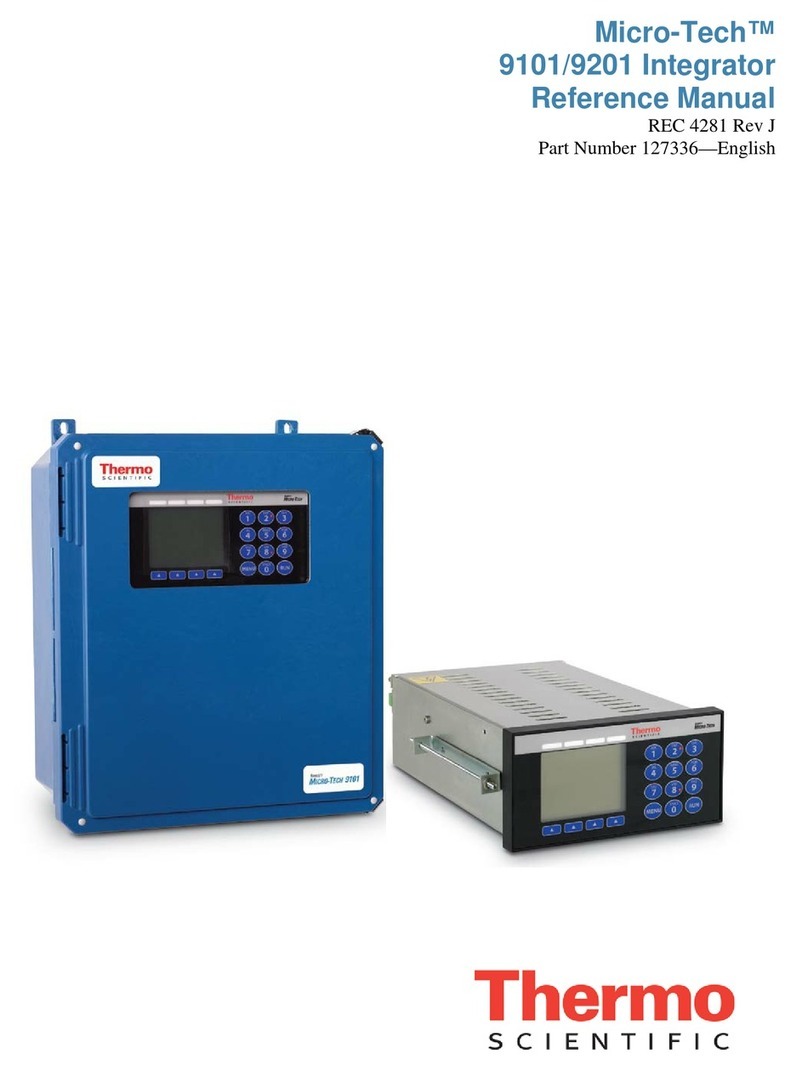
Thermo Scientific
Thermo Scientific Micro-Tech 9101 Reference manual
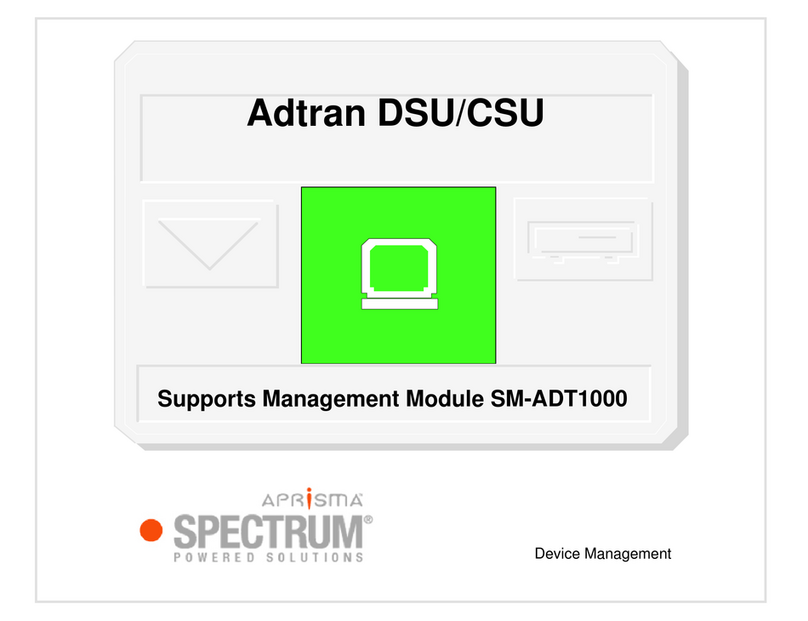
Aprisma
Aprisma IQ Series manual
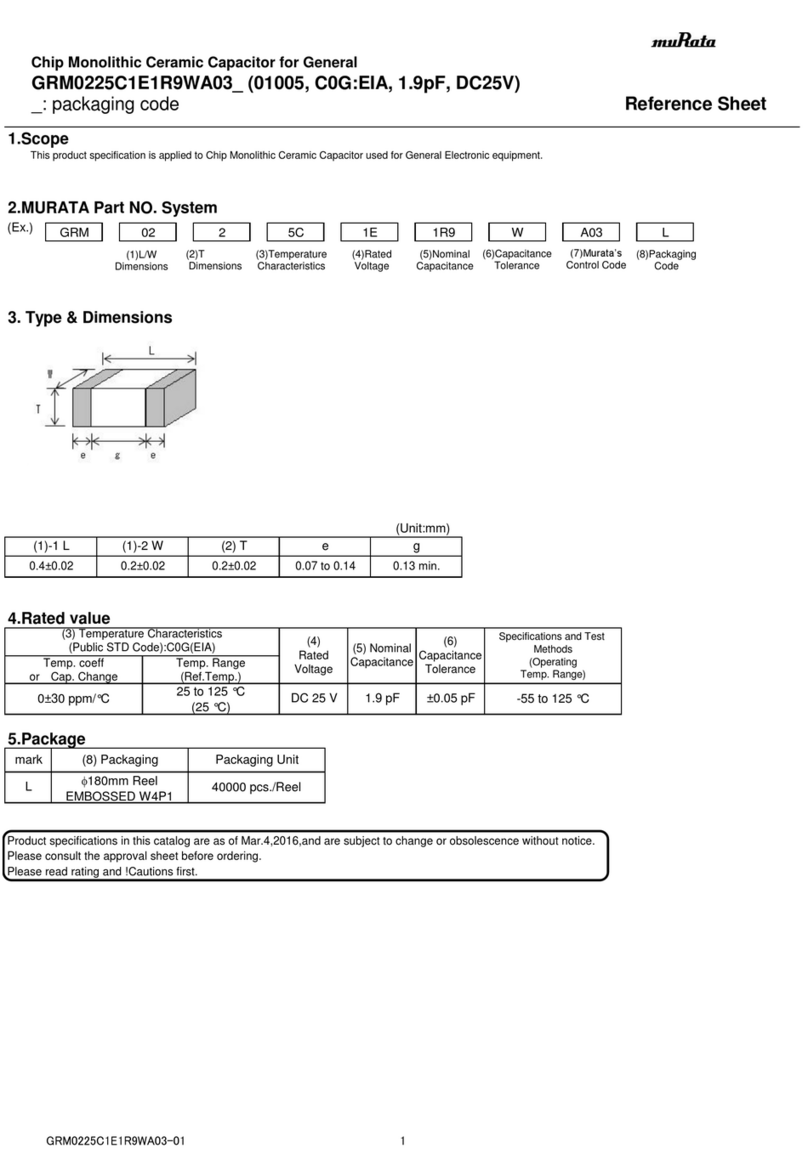
Murata
Murata GRM0225C1E1R9WA03 Series Reference sheet
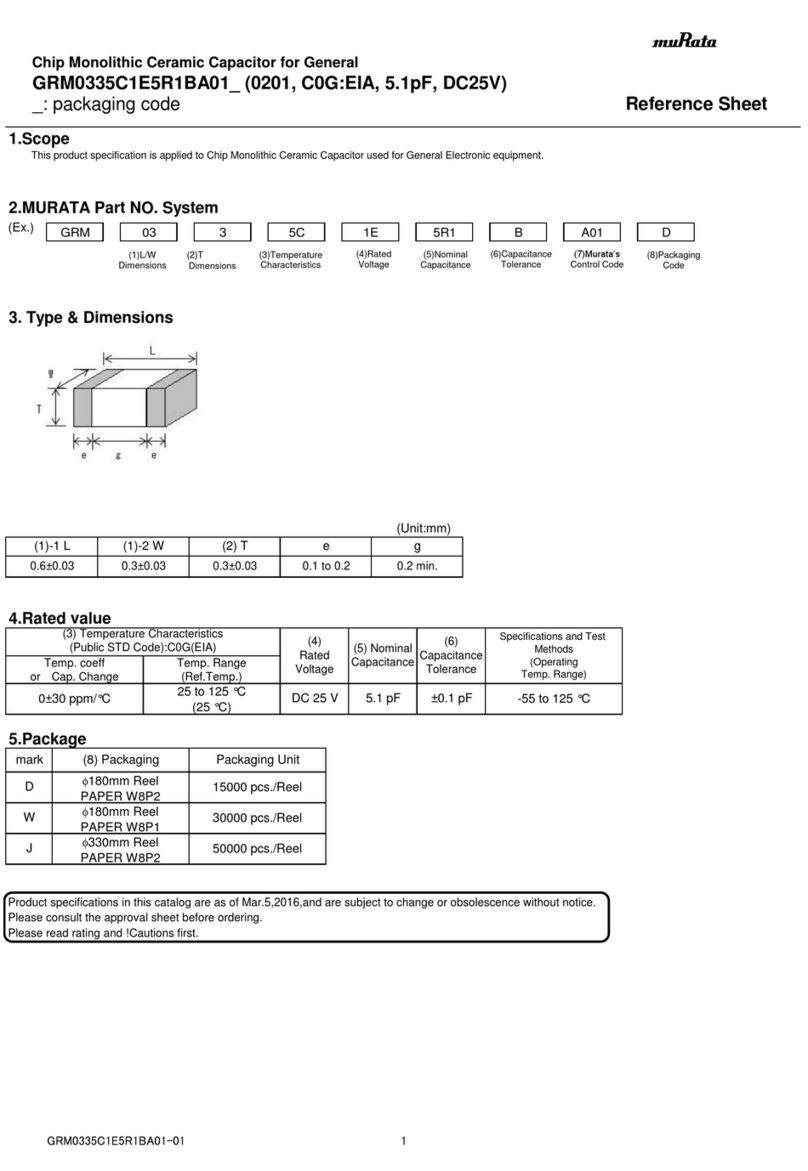
Murata
Murata GRM0335C1E5R1BA01 Series Reference sheet
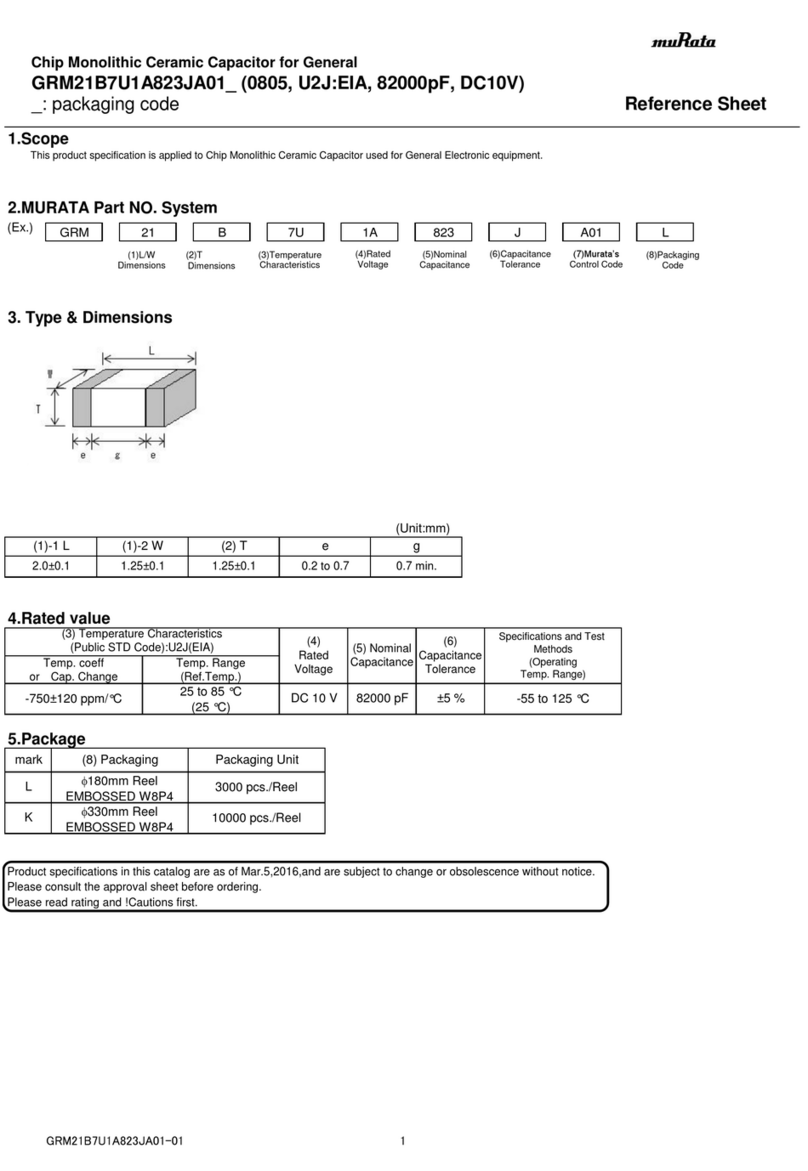
Murata
Murata GRM21B7U1A823JA01 Series Reference sheet
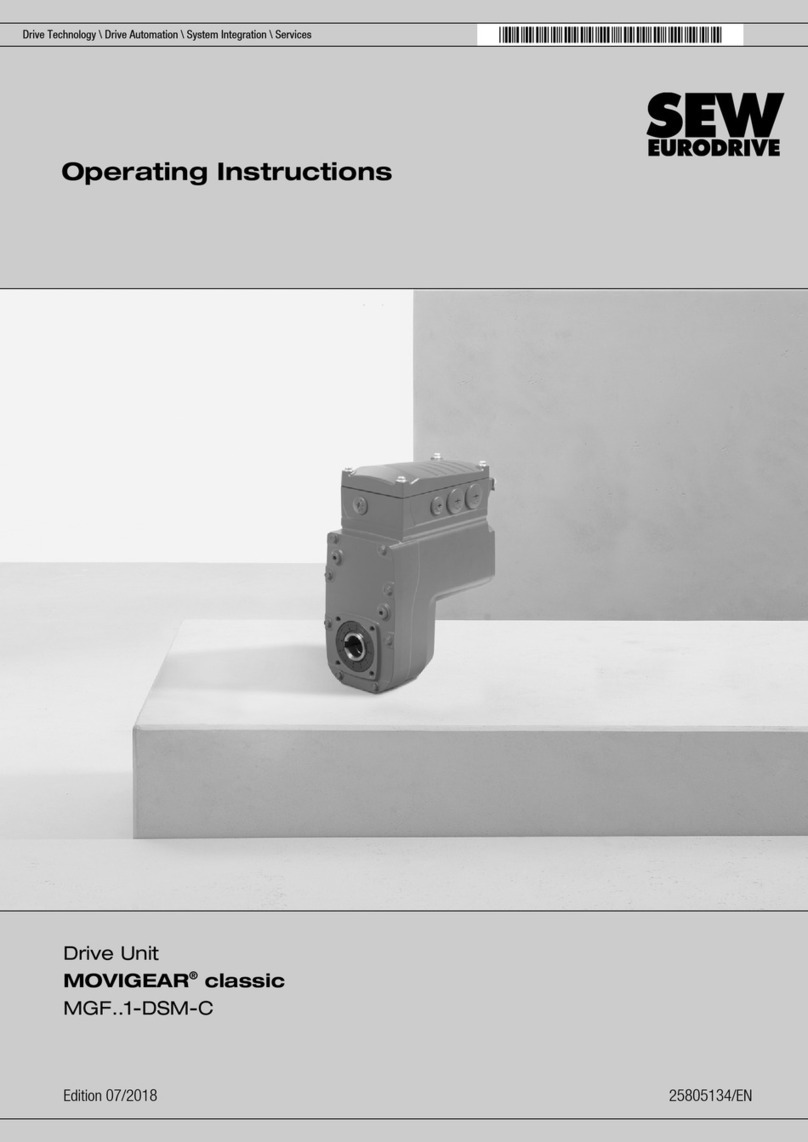
SEW-Eurodrive
SEW-Eurodrive MOVIGEAR classic MGF**1-DSM-C Series operating instructions
